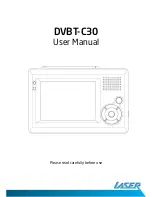
6
REV D
60706-231
GASOLINE
When using gasoline, always use fresh, clean, unleaded fuel. The
engine is certified to operate on unleaded gasoline with a minimum
octane rating of 87 or higher. Gasoline containing no more the 10%
ethanol is acceptable.
CAUTION: EQUIPMENT DAMAGE
Do not use unapproved gasolines, such as E15 or E85. Do not mix
oil in the gasoline. Use of unapproved fuels will damage the engine
components and void the engine warranty.
Use of fuels with content of ethanol greater than shown above may
cause starting and/or performance problems. Always ensure that the
fuel is clean and free of all impurities.
WARNING: FIRE DANGER
Gasoline and its fumes are VERY explosive when proper precautions
are not taken.
Never use gasoline that has been stored for an extended period of
time as the fuel will lose its volatile properties and you will be left with
varnish residue. The varnish like substance will clog the carburetor and
will not burn properly.
The use of fuel additives, such as Sta-Bil, or an equivalent will minimize
the formation of fuel gum deposits. If a unit has been out of operation
for an extended period of time, it is best to drain old fuel from the
engine and replace with fresh fuel before attempting to start.
FUEL SUPPLY
The EC units provide flexibility in where they get gasoline from.
Whether you are using our optional fuel tank, or supplying your own,
there are some important factors to consider. The fuel pump on the unit
is only capable of about 30” of lift in ideal circumstances. Tank size,
tank location, hose size, hose routing, and hot spots all play a role in
a successful fuel tank installation. Preferred fuel installations use 1/4”
hose that run straight to the engine with no drops or twists from an
adequately (15 gallons) sized fuel tank.
1. The fuel lift from the bottom of the tank to the fuel outlet on the
generator must not exceed 30”. If a greater lift is required, it
may be necessary to provide an additional electric fuel pump to
ensure the engine get a sufficient flow of fuel.
2. EPA regulations require the installation of a carbon canister on the
tank vent line. This is to prevent the escape of fuel vapors in to
the
atmosphere.
3. You need to have a primer bulb in the fuel line to prime the fuel
from the tank to the fuel pump. The vacuum fuel pump on the
engine will not draw the fuel up from the tank until the line has
been properly primed.
4. In all cases the minimum fuel line size must be 1/4” or larger line.
And the fuel line must be certified for use with unleaded gasoline.
PREPARING THE UNIT
UNPACKING
CAUTION: EQUIPMENT DAMAGE
THIS UNIT HAS BEEN SHIPPED WITHOUT OIL. Failure to maintain
the engine oil at the proper level will result in serious engine damage.
When you unpack your engine-generator set be sure to remove all the
information sheets and manuals from the carton.
1. As you receive your unit, it is critical to check it for any damage. If
any damage is noted, it is always easiest to refuse the shipment and
let WINCO take care of the freight claim. If you sign for the unit, the
transfer of the ownership requires that you file the freight claim
2. Before proceeding with the preparations of your new generator
for operation, take a couple of minutes to ensure the unit you have
received is the correct model and review the specification pages in this
manual to ensure that this unit meets your job requirements.
VENTILATION
These engine generator sets use large amounts of fresh air for cooling.
When designing plans for your installation, special attention must be
paid to the flow of hot air from both the engine and the generator.
Both the engine and the generator must be supplied with a constant
flow of fresh air from the outside to ensure they don’t overheat. Some
provision must be made to remove the hot air out the enclosure.
Ambient temperature around the unit should not exceed 104°F.
Engine or generator failures resulting from inadequate ventilation
are considered abuse and not covered by the generator or engine
manufacturer’s warranty.
The engine exhaust from this engine must be vented to the outside.
When venting hot exhaust through any type of flammable wall be sure
to use exhaust thimbles to prevent fires.
WARNING:
Failure to properly vent out the exhaust out of an enclosure can and will
kill you. Carbon monoxide is both invisible and orderless, it can build up
very rapidly in any enclosure not properly vented.


































